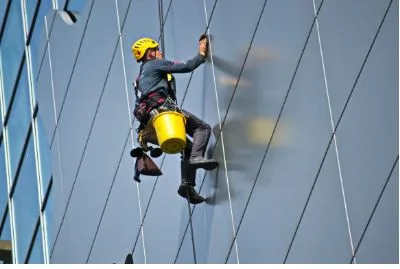Anchored Height Safety: Aussie Tradies Reveal What Keeps Them Secure Up High
Ensuring safety while working at heights is a critical component of many industries in Australia. Construction workers, window cleaners, and other tradespeople who work elevated above ground understand that maintaining safety is not just about adherence to regulations—it is about going home to their families at the end of the day. One key element that keeps tradies safe is anchored height safety, a system designed to prevent falls and accidents when working at height.
The Importance of Height Safety Systems
For those in the trades, safety strategies are not simply a checklist item but rather the foundation of their daily routines. Anchored height safety systems are integral for providing a secure anchor point, thereby reducing the risk of serious injury or fatality. These systems can include a variety of components such as guardrails, safety nets, and personal protective equipment such as harnesses and lanyards that attach to the anchor points.
A focus on height safety has led to sophisticated systems being installed in worksites across the nation, ranging from the modest residential roof to sprawling commercial construction sites. Australian safety standards are stringent, demanding that any trade work done above two metres incorporates a reliable form of fall protection.
The Role of Roof Anchor Points
The specificity of tasks at height requires tailored solutions for safety. One of the pivotal elements that tradies rely on is the installation of roof anchor points. These components are securely attached to the structure and serve as the connection point for lanyards and lifelines. Roof anchor points can be temporary or permanent fixtures, and their deployment varies depending on the nature and duration of the work to be done. Staying attached to these anchor points is a tradie’s primary line of defence against falls from height.
Anchor points are not a one-size-fits-all solution, however. Selection and installation must consider the load-bearing capacity of the roof, the type of work to be undertaken, and the number of workers who will be simultaneously attached to the system. Specialists in the height safety industry can carry out assessments and installations, ensuring that the most suitable and compliant anchor points are in place.
Height Safety Compliance and Training
Proper use of anchored height safety equipment requires more than just good hardware—it also necessitates comprehensive training. Aussie tradies must receive the appropriate instruction to understand the dynamics of fall arrest systems, including how to inspect their gear, proper attachment techniques, and emergency procedures in the event of a fall.
Moreover, compliance with Australian regulations is paramount for both the welfare of workers and the legal protection of companies. This includes adhering to Australian Standard AS/NZS 1891.4 for the selection, use, and maintenance of height safety harnesses and other personal fall arrest systems. Employers are responsible for organising regular equipment inspections, and tradies are tasked with staying vigilant about their safety practices.
Emerging Technologies in Height Safety
As technology advances, so do the possibilities for innovative safety solutions. One of the most intriguing developments is the introduction of the drone window washing service. By utilising drone technology, window washing can be performed at height without the physical risk to employees. Drones can reach difficult or dangerous locations and, when operated correctly, offer a safer alternative to traditional window washing methods.
The potential for drones to augment height safety practices doesn’t stop there. Beyond window cleaning, drones could be used for building inspections, aerial surveys, and even to assist in the installation of height safety systems by delivering equipment to hard-to-reach areas.
Ongoing Challenges and Innovations
No safety system can offer absolute protection, and challenges remain in educating workers, maintaining equipment, and advancing technology to improve safety further. In the face of these challenges, tradies and safety professionals are committed to upholding the highest standards in anchored height safety. Continuous innovation and the sharing of best practices will play a crucial role in these efforts.
Investment in quality height safety equipment and training can save lives, improve job efficiency, and foster better industry practices. It ensures not only the security of individuals working at heights but also contributes to the broader reputation of Australian trades for prioritising safety and excellence in their work.
For all Aussie tradies working up high, anchored height safety isn’t just about adhering to regulations—it’s a fundamental component of their professional lives. As the industry evolves, tradies will undoubtedly continue to seek out and adhere to the best possible safety practices, ensuring their security while enabling them to contribute their skilled workmanship to Australia’s growth and infrastructure.
Rightly so, anchored height safety will remain at the forefront of height-related industries, influencing the development of new methods, equipment, and technologies to keep workers safe, no matter the elevation at which they operate.




